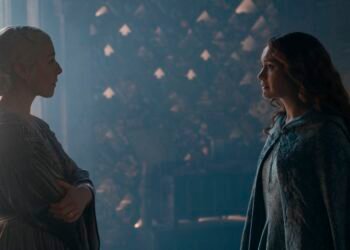Modern-day updates of childhood staples are often clunky messes, because of the ways they try to adapt the hot-button topics of their original eras for modern audiences. Setting a piece in the time period it was written, as Hulu’s Looking for Alaska adaptation does, tends to rectify some of the dated tropes and plotlines. Otherwise, you get a Stargirl, with the specifics of 2000 bogging down a 2020 story.
Netflix’s new series The Baby-Sitters Club, adapted from the long-running Ann M. Martin book series published from the late 1980s to 2000, pulls off the tricky feat of setting the series in 2020, but updating small details of the bigger plotlines to more effectively capture the present day. It keeps the essence of the characters, but little touches — like the rival league The Baby-Sitters Agency launching a social-media campaign — help keep the stories engaging.
[Ed. note: This review contains mild spoilers for The Baby-Sitters Club.]
The story setup is still the same: 13-year-old tomboy Kristy Thomas (Sophie Grace) decides to start a baby-sitters club with her friends, quiet Mary Anne Spier (Malia Baker), artsy Claudia Kishi (Momona Tanada), and fashionable new girl Stacey McGill (Shay Rudolph). Eventually, they’re joined by hippie Dawn (Xochitl Gomez). They take on clients in their small town, while grappling with the struggles of growing up. Showrunner Rachle Shukert understands that things like a parent remarrying, an overprotective father, and childhood diabetes are evergreen storylines that will be applicable across generations. Each episode follows a different book, and the tentpoles of the plotlines are roughly the same. The updates come through the specificities on how each story manifests, with more nuance added to simplistic plotlines when appropriate.

Photo: Liane Hentscher / Netflix
For instance, in the fourth episode of the series, “Mary Anne Saves the Day,” (based on the book of the same name) timid Mary Anne calls the hospital when the kid she is taking care of becomes ill. In the book, the act of bravery is making the phone call and going to the hospital, but the show updates it: Mary Anne stands up to the hospital staff, who are misgendering the young girl. Mary Anne’s arc of standing up for herself remains the same, but with a more modern touch.
Die-hard fans of the books don’t need to worry: the sitters still use a landline to schedule appointments. It’s a little detail established earlier on, with just a bit of explanation: Kristy insists an old-fashioned method works best, because her mom misses simpler days. And it just so happens that Claudia has a clear plastic ’90s phone she bought off Etsy. Anyone who feels modern technology guts any attempted plotlines about communication issues needs to take notes from The Baby-Sitters Club, which effectively uses phones, either by taking them away for believable reasons, or by integrating them into the plotline. It’s a testament to how contextualizing older or newer elements can be done smoothly, without losing beloved elements of the original story.
Like their book counterparts, all the girls in The Baby-Sitters Club are more in-depth than their one-word trope descriptor (tomboy, goody two-shoes, artsy kid, prep, hippie) implies, thanks in part to the skillful performances from the young actresses. As spunky, outspoken Kristy, Sophie Grace adds nuance to her bossy, bratty attitude, grounding what could be an over-the-top performance with some tender moments. Momona Tamada, of To All the Boys I’ve Loved Before fame, captures Claudia’s quirkiness and energy, but not without pangs of isolation because she feels her family will never understand her.

Photo: Kailey Schwerman / Netflix
The girls are all endearing, but the adult cast is just as interesting and compelling. The parents have their own plotlines, woven realistically into their daughters’ lives. They’re never just one-note authority figures, even would-be tropey ones like Mary Anne’s overprotective father (Marc Evan Jackson) and Dawn’s free-spirited mother. Kristy’s relationship with her mother (Alicia Silverstone) helps characterize Kristy’s sometimes-grating behavior. Her mother is remarrying, and as Kristy already feels abandoned by her father, she’s also frustrated by the possibility of a new father figure, and the question of where she fits into a new family.
Much as with the books, each episode of The Baby-Sitters Club revolves around a particular character. Even if Stacey is narrating, the rest of the girls aren’t forgotten. But handing off the viewpoints lets each character get screen time, fleshing out their individual characters and their relationships. The books were praised for tackling big themes like death and divorce, but it’s important to remember that the little problems — crushes on older boys, fights with friends, or redecorating childhood bedrooms — can be just as weighty, especially for 13-year-olds. The Netflix adaptation makes every episode and plot point feel important, and lets the characters’ details and desires feel valid. That makes this the kind of kids’ show that transcends audience age.
The Baby-Sitters Club is available to stream on Netflix on July 3.















































